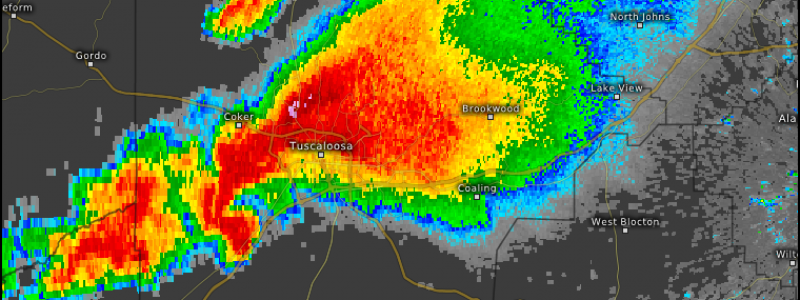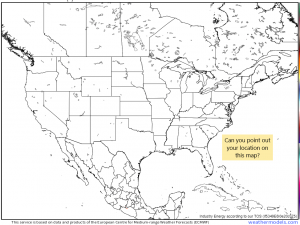
Severe Weather Awareness – Are You Prepared?
The beginning of meteorological spring, March 1st, is normally heralded as the start to “severe season.” While severe storms can happen any day of the year given the right ingredients, March is historically when they begin to occur with more frequency. The reason being: this is the time of year when the polar jet begins to retreat northward, allowing the southern half of the country to warm and draw moisture in off of the Gulf. When that jet stream dips back down occasionally, it can bring low pressure systems with it. The forcing associated with the system swinging through an area that has been primed with warm, moist air combined with the oftentimes frigid air behind it can occasionally kick off severe weather.
Why are we talking about this? Well, Severe Weather Awareness Week is officially observed somewhere around the end of February/very early March. The goal is to prep the population for the increasing likelihood of severe weather.
We are going to do the same. There’s never a bad time to talk about severe weather preparedness, but this week brings it to national attention.
This is a topic I’m passionate about and one of the reasons I returned to school to pursue Meteorology. Giving the public the knowledge they need to remain safe during severe weather/know when they need to act is absolutely vital. Even if you, personally, are aware of safety practices, someone you know may not be. Please share with them as we move toward a historically more active time of year.
I’ve compiled a list of ways to be better prepared for the threat of severe weather:
- Know Your Location
I can’t stress this enough. It may sound like common knowledge, but you wouldn’t believe how many people can’t find their location on a map. This is absolutely vital and such a simple thing to learn. Be able to not only point out where you live (with relative accuracy) on a map of your state, but know which county you live in and the names of the counties surrounding yours. Warnings are generally issued by counties. Knowing the counties surrounding you will help you know if you are next in line for severe weather on an active day.
Quiet weather days are a good time not only to review this yourself, but to teach your children. Children should know how to point out their location on a map along with what county they live in. It may save their lives someday.
2. Know the Difference Between a Watch and a Warning
Watches and warnings often get confused. I’ve created a graphic (above) to help explain the difference.
A watch is issued ahead of an anticipated event. Watches are posted when all the ingredients for severe storms/tornadoes exist but have not combined to produce the severe weather just yet. In best case scenarios, watches will be issued hours ahead of any adverse weather. In worst cases, they are issued with much shorter lead times.
Regardless of when they are issued, if you reside in an area within the watch, you should remain weather aware for the full duration. Just because it’s sunny and warm at the time the watch is issued doesn’t mean the weather won’t change quickly in the coming hours. Conditions can be relatively pleasant ahead of severe events.
A warning is issued when the event is already occurring. Typically, this happens when certain thresholds are reached. Strong winds (58 mph or greater), damaging hail (diameter of 1 inch or greater), if there is tornadic rotation detected by radar, or a tornado is already on the ground are all reasons to issue a warning. A warning means you need to take immediate action to protect your life until you are given the all clear or the warning expires.
It’s important to mention that severe thunderstorms can be just as damaging and dangerous as a tornado. Straight-line winds can pack a punch and are capable of downing trees or powerlines and damaging homes. It is always good idea to shelter during a severe thunderstorm warning as you would for a tornado warning, especially when severe-threshold winds (58 mph or greater) are involved.
3. Have MULTIPLE Ways to Receive Warnings
I’m going to preface this section with this: Tornado sirens are NOT a reliable way to receive warnings!!
Though that fact is an unpopular one in some regions, it is 100% true. Tornado sirens were made to be heard outdoors, not in your homes. They are an outdated mode of issuing warnings and there generally aren’t enough of them to be heard everywhere and in every building in a region. Furthermore, if you reside in an area with more varied topography (northern AL, northern GA, TN, NC, VA etc), if there is a hill between you and the siren, the sound will become distorted or even blocked and you may never hear it.
Reliable sources include:
- NOAA Weather Radio
- Wireless Alerts – turn these ON in your phone settings
- Smart Phone (Local) Weather Apps – your local news station’s weather department often has it’s own app that will push watches and warnings out to you
Every home and business should have at least one weather radio. This is the most reliable source as it does not need power to function (can be battery operated) and does not rely on a cell signal to receive data. Cell towers can be taken out by a tornado or strong winds and vital warnings may be missed if you’re relying on your internet connection.
Be sure that at least one of your sources for warnings is loud enough to wake you in the event of a nighttime severe weather threat. The majority of deaths from severe weather occur overnight as people are naturally asleep and not weather aware. Don’t become a statistic.
4. Identify and Prepare a Safe Space
Having a safe space ready to go is important. Though the NWS aims to give long lead times in their issuance of a warning ahead of a tornado, sometimes it simply isn’t possible and people have mere minutes to to shelter. You don’t want to waste that time scrambling to find things you need or figuring out where to go.
Identify an interior room on the lowest level of your house without any doors or windows. Stock this room with hard sole shoes, helmets to protect from flying debris, and a whistle to alert rescuers to your location if the worst occurs. If you have pets, keep their carriers or leashes ready to go near your safe space so you can protect them as well. Keep a weather radio in this safe space to ensure you continue to receive any additional warnings.
Some of the worst places to be during a tornado warning are: in a car, outside, or in a mobile home. If you find yourself in any of these places during a warning, do your best to get to a secure place if it is safe to do so. Most counties will have designated public tornado shelters. Now would be a good time to identify and map them out in the event that you need to make use of them.
Do your best to remain as aware of the daily weather as possible during this season. Check your local news, national weather, and, of course, check here too. If there’s an upcoming severe weather threat, I try to at least touch on it in my blogs. For watches and warnings, rely on your local branch of the National Weather Service. Stay safe this season and make sure your friends and neighbors are safe as well!!













